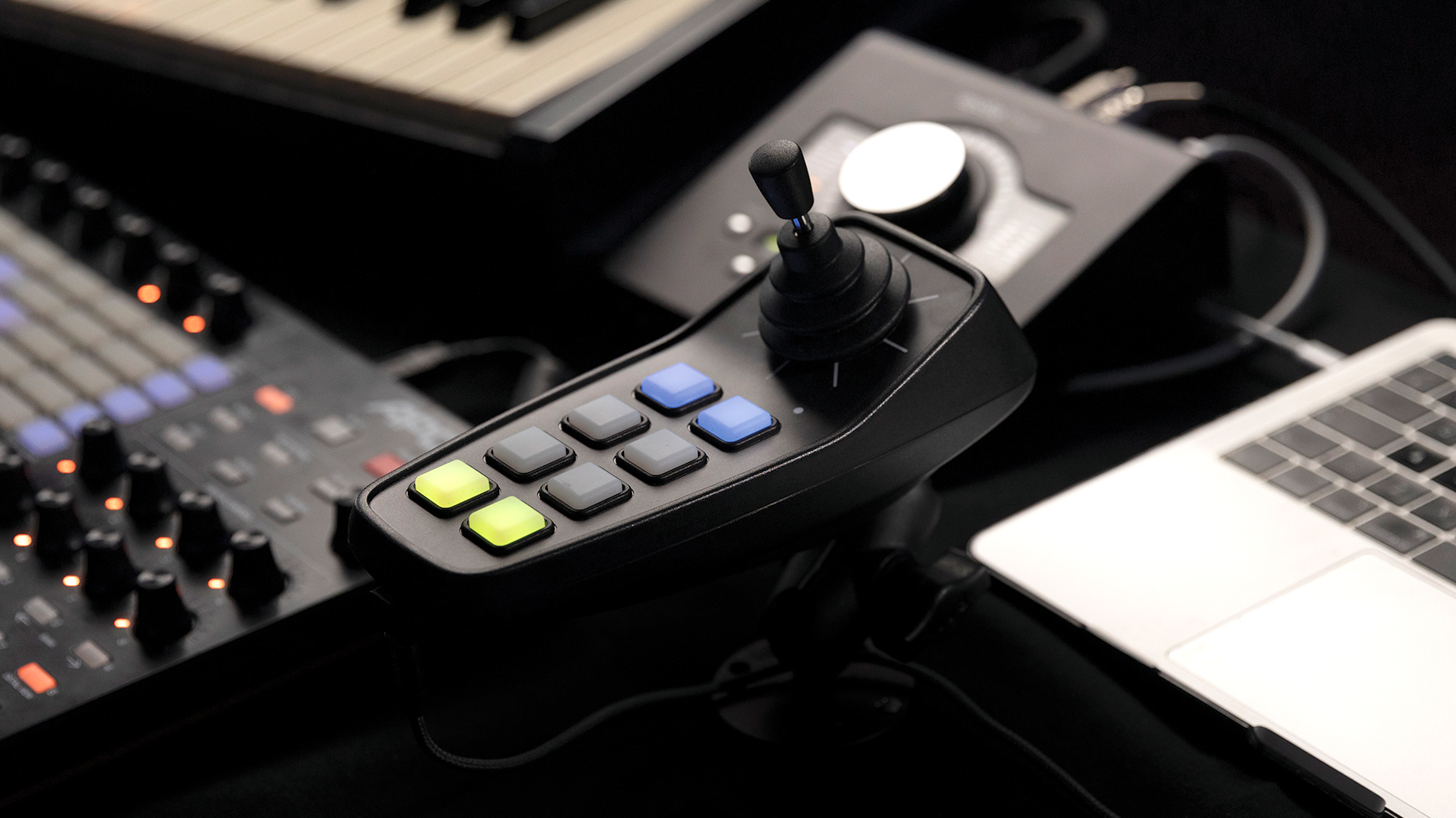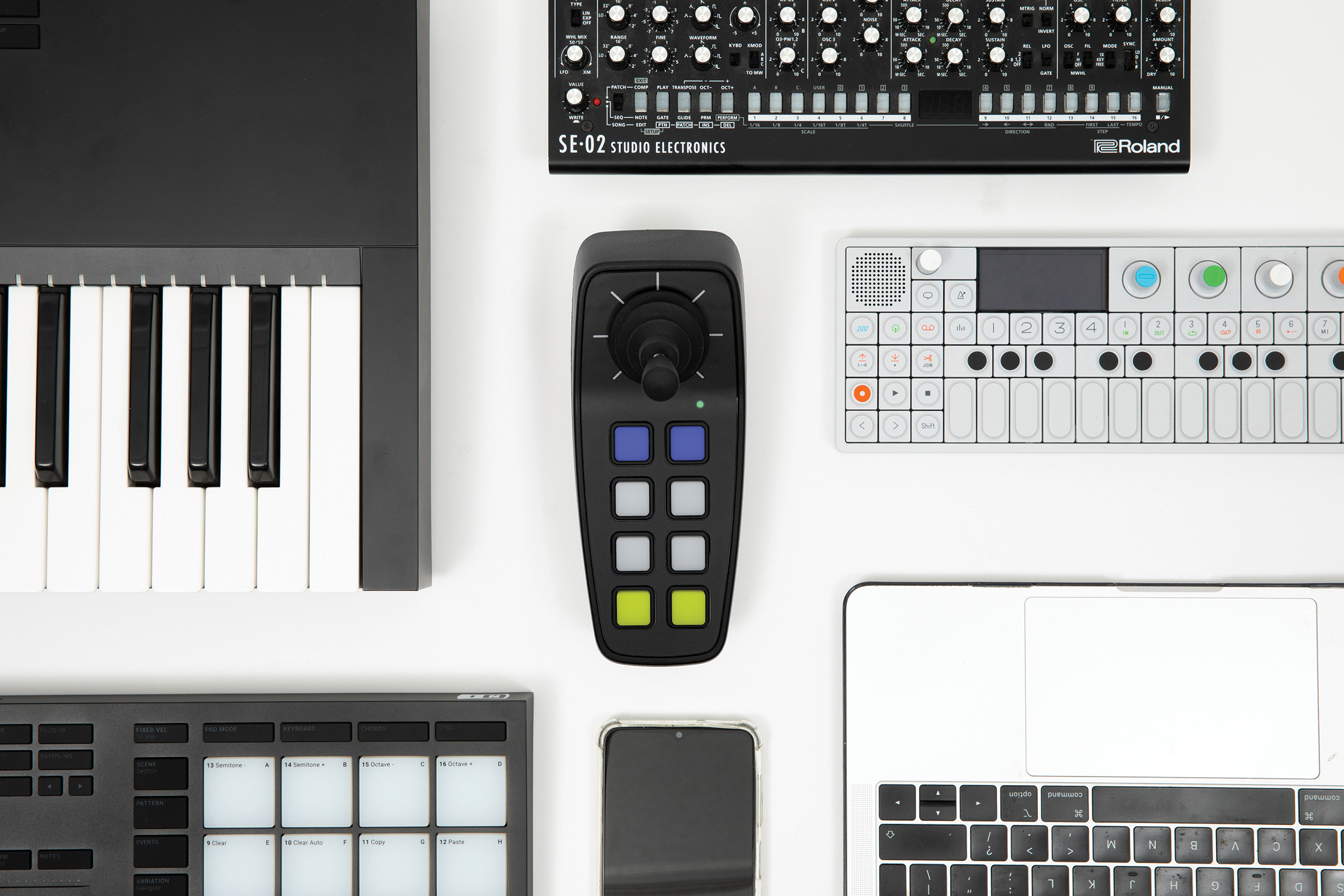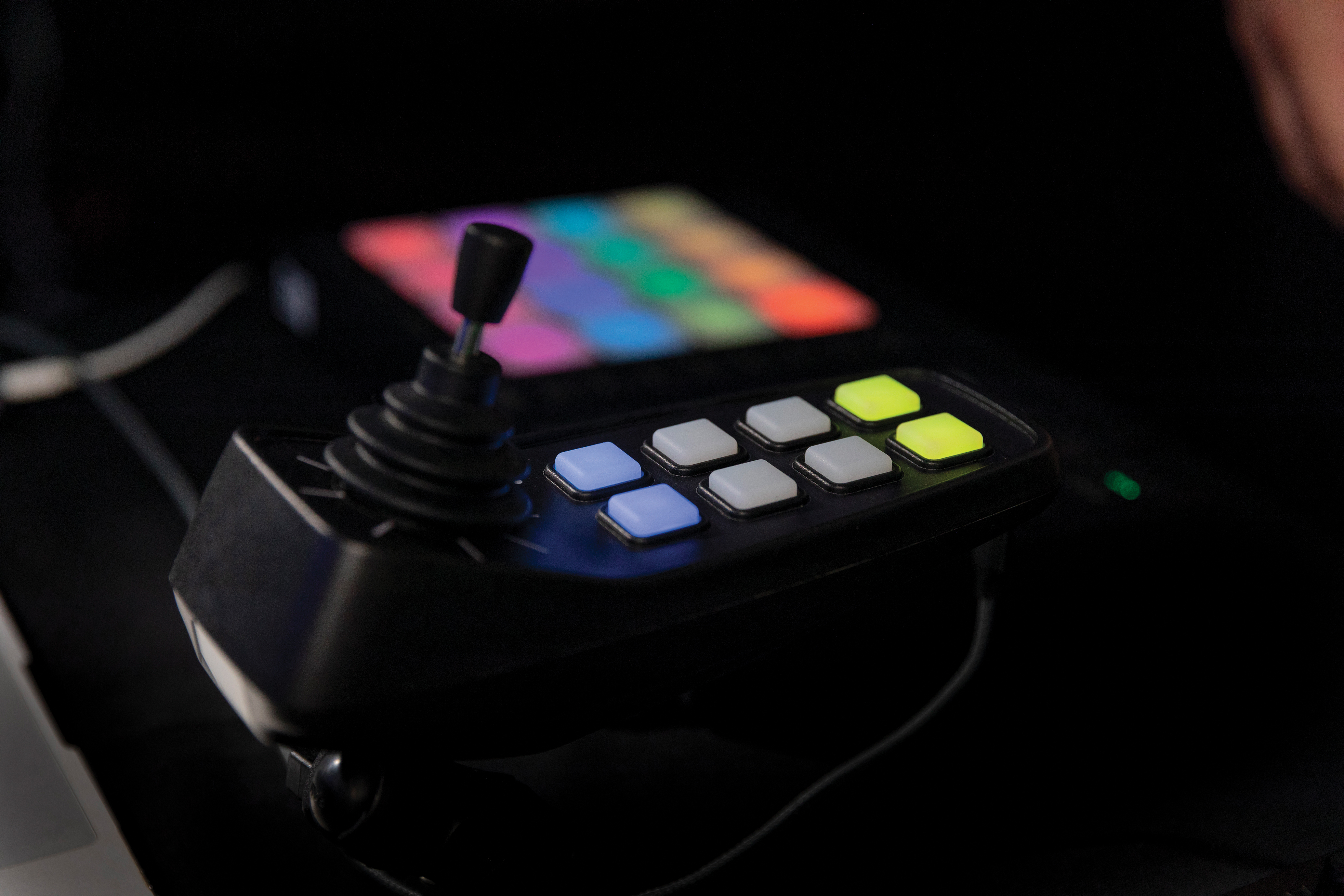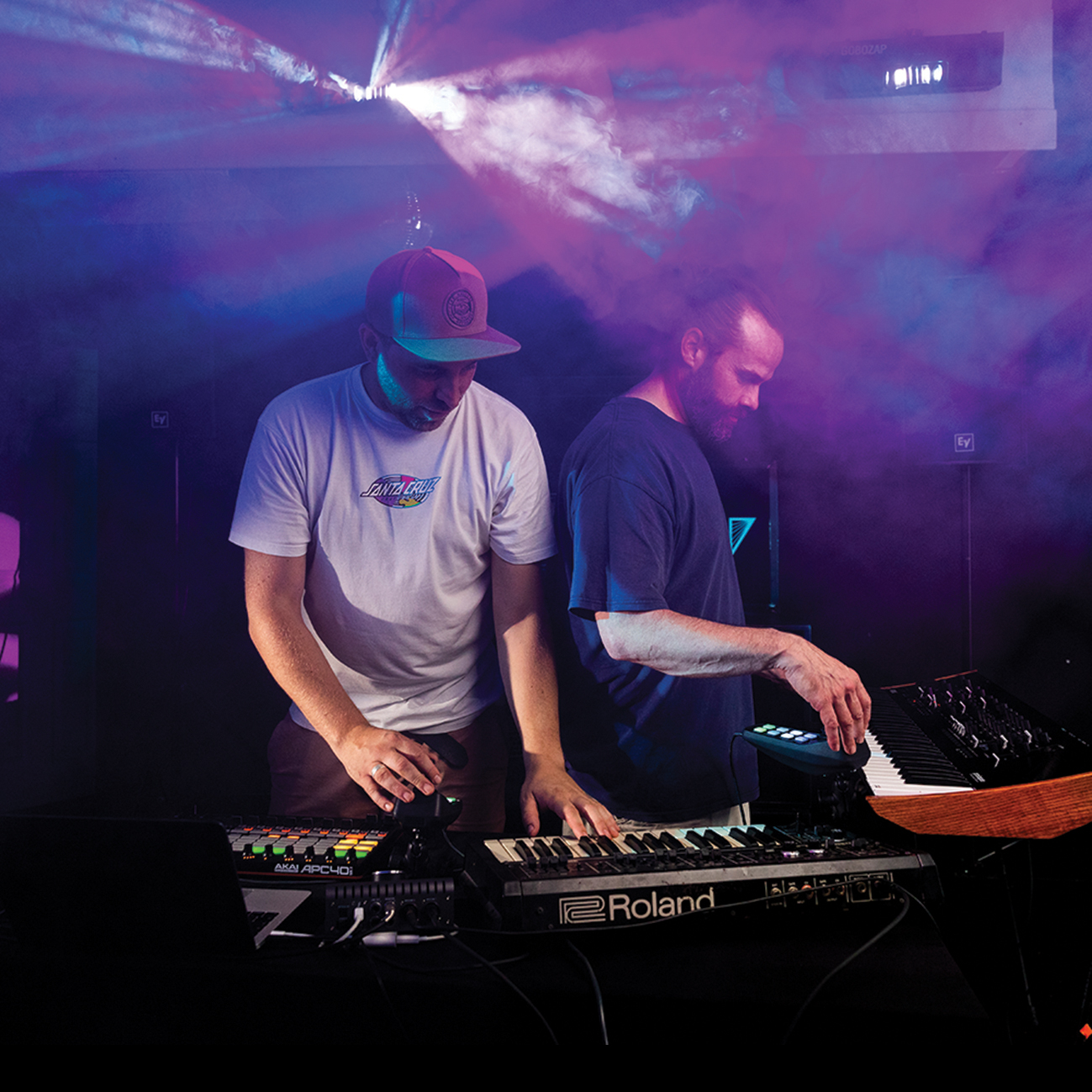Digit Music is making music tech more inclusive with its joystick MIDI controller: "It's the power of a keyboard in a device you can play with one finger"
We sat down with Digit Music founders Owain Wilson and Simon Tew to find out more about the Cmpsr controller

Launching the innovative Cmpsr joystick MIDI controller earlier this year, Digit Music are focused on creating an inclusive model of music production that allows those with physical restrictions to find their way into the joy of musical expression.
We spoke to Digit Music founders Owain Wilson and Simon Tew to find out more.
Firstly, we loved Cmpsr. How long had this controller been in the works, and what prompted you to develop it?
Si Tew: “The initial idea was really in 2018. It was all about recognising the need. I was working with individuals who had reduced access. A lot of instruments that were out there just weren’t really working for them. That was the initial spark.
“Owain and I have known each other for a long, long time. He was working in a slightly different side of things, but noticing similar issues. We thought we should bring a design to market that met those needs and allows people to get creating. Things really started picking up around 2020, that’s when we incorporated as a business and started to move things forward. By that point we’d already built a prototype and had been out working with people making music with it.”
Owain Wilson: “As Si was saying, I came into this from a slightly more commercial aspect. I was working at Native Instruments at the time. Again, it was a similar thing. People were struggling to engage. We both felt that things didn’t have to be that complicated. We didn’t want to water down the experience for people.
“We talk about AI and things like that these days where you can just hit *do something* and software creates for you. As musicians that’s not what we wanted – musicians want involvement in the journey. So the idea was ‘how can we make something that keeps people completely in the driving seat’? Cmpsr assists with jumping over what might be a barrier for them. Either on a physical level or even on just an understanding level. Whether it’s keyboard- or plugin-focused.”
ST: “Both of us come from a live performance background. We’ve done live electronic music with lots of physical instruments. It was baking that all down to one device where you can control it all with just one finger. Hopefully we’re helping people jump over those barriers and they can see themselves as musicians.”
Get the MusicRadar Newsletter
Want all the hottest music and gear news, reviews, deals, features and more, direct to your inbox? Sign up here.

Could you give our readers a top-down overview of Cmpsr’s abilities?
ST: “It’s gaming technology with musical capabilities, essentially. The way that we describe it is taking the power of a full keyboard – and the knowledge and music theory of someone who knows how to get the best out of that keyboard – distilled into a device you can play with one finger. The tuning is automatically done on the device.
“It’s worth noting as well that there’s no necessity for a software layer between Cmpsr and whatever you’re using; if you’re running it on an iPhone or with a Mac, whatever you’re using comes in and out as MIDI. There’s no key-fixing on a software layer, it’s all done inside the instrument.
People can simply move around and play chords. You can also access notes outside the scale if you want to get more technical. Then we’ve built in lots of CC options for control. You can basically run entire Ableton Live sets, and really get expressive with MPE/SWAM-based instruments. You can also use it as a massive X/Y pad, which works nicely in a live environment. We want it to feel like an instrument in its own right.”
OW: “Just to add, that it has all those abilities but it’s also simple and inviting for people to use. Anyone can pick it up and play it straight away. If you want to dig under the hood as an advanced musician, then Cmpsr will scale with you. With a traditional instrument you’ve got to put a lot of time into it.”
You’ve mentioned that you envisage Cmpsr as potentially a live performance instrument. Can you imagine it onstage, being used alongside other more traditional instruments?
ST: “Yes, it could either be among real instruments or sit within a full electronic set-up. The flip side of using it as an instrument is running your Ableton Live rig with it, or running Bitwig. We’ve got people using AV setups with it, via software like Resolume.
“What’s actually programmed onto Cmpsr at the minute is about 5% of what we’ve already designed and tested, so we’ve got a long feature roadmap ahead. We’re going to be drip-feeding new elements. It can even run ambisonic rigs for spatial audio mixes. But we figured slow and steady wins the race. We wanted to slowly release these things as user understanding increases.”
OW: “When I’m doing live shows I work with two Cmpsrs, it’s a better way to interact with the plugins that I use than other tools out there. We’re making this in order to help people gain access to the music production process, but also make things smoother for seasoned professionals.”
There’s a big emphasis on the benefit that Cmpsr brings to making music production more inclusive, is this an avenue that Digit Music will continue to explore in the future?
OW: “Yes, we set the company up as disability confident and so I think we both feel that there’s a need for diversification in music and the wider creative industry. That starts by giving people a tool they can actually be creative with. That’s definitely one of the core values for us. When we talk about accessibility it’s not as simple as a defining concept; it could be a financial or a geographical restriction, so we try to put all of that into the mix when we consider what we do.
“We’re really trying to think about what barriers we put in place as instrument designers, that might not allow everyone to have an equitable experience with it. I think that permeates through all of the resources that we make, too. We’re lucky that we’re plugged into a broad network of disabled musicians. They offer that insight that we don’t have.”
ST: “I think there’s something about designing with that in mind as well. Because, what we’re talking about is designing a user experience and accessing vast amounts of power through a simple user experience. It’s a concept that works for everybody. Though we’re focused on equitable access, it also appeals to, say a young beat-maker, who doesn’t understand music theory, it works for the studio producer who just needs a new tool that’s quick and intuitive.
“Music is a huge part of the cultural landscape, and vast amounts of people have been shut out from having any input on that. We need to change the tools in order to make sure everyone has access.”

The haptic feedback aspect is really cool. Do you think haptic responses will help software-oriented music-makers reach a point where the process feels more tactile?
ST: “There is that side of it definitely. The haptics are really for giving information very quickly without needing to look at a screen. If you need to be scrolling through menus on-stage, it can be quite off-putting With the feedback of Cmpsr you can ‘feel’ where you are in a more tactile way than staring at a screen.
“For someone who’s visually impaired, you’ve got to be able to understand where you are and what buttons you’ve pressed. We’re lucky we’ve got a wide network of visually impaired musicians who we were able to work with and get feedback. It’s very informational.”
OW: “We’ve even thought about using it from a guided performance point of view. There’s no reason why we can’t use haptic feedback to help people improve their performances, too.”
For the release you partnered with Bitwig. Is that DAW the recommended accompaniment to Cmpsr?
OW: “Cmpsr works with all major DAWs. I’ve lost count of how many DAWs I’ve tried and used across my time in the industry. One part of the company is focused on sound design so we use lots of different DAWs in our day-to-day work there as well.
“The reason we landed with Bitwig is just because they’ve been really supportive with what we’ve been doing. They saw a value proposition with being integrated with Cmpsr from the get-go. There’s a lot of mapping you can do with Bitwig, as well. But, it’s really important for us that it integrates with whatever DAW, or whatever piece of music software. Anything that accepts MIDI, basically.”

What’s next for Digit Music, and can you share any other information about upcoming releases? And how do you see the company developing more generally in the future?
OW: “Well as we say we’ve only incorporated between 5 to 10% of the total ability set of Cmpsr into the unit at the moment, so our roadmap will continue. We didn’t want the launch to be ‘it does everything for everybody’ – we wanted to make it simple to understand then build it out. There are more advanced DAW mappings in the pipeline for Bitwig and Ableton Live. We’ve got more music innovations on the go, we’re looking at a digital version of the hardware.
“But, for now, the big thing is getting the word out and growing our customer base. Music is still waiting for its Instagram and TikTok moment, it’s not quite happened yet. We’re not going to be that for everyone, but we’re very focused on the joy of playing an instrument as opposed to creating a full-blown recording environment that lots of other people are more focused on.”
ST: “In addition to Cmpsr, we do a great deal of sound design and sell hundreds of thousands of samples every month via Splice, Loopmasters and other sample content hubs. We’re building a portal that will explain how our software, and hardware, works alongside custom mappings. The aim of that is to enable people to be that bit more successful with our technology.”



I'm the Music-Making Editor of MusicRadar, and I am keen to explore the stories that affect all music-makers - whether they're just starting or are at an advanced level. I write, commission and edit content around the wider world of music creation, as well as penning deep-dives into the essentials of production, genre and theory. As the former editor of Computer Music, I aim to bring the same knowledge and experience that underpinned that magazine to the editorial I write, but I'm very eager to engage with new and emerging writers to cover the topics that resonate with them. My career has included editing MusicTech magazine and website, consulting on SEO/editorial practice and writing about music-making and listening for titles such as NME, Classic Pop, Audio Media International, Guitar.com and Uncut. When I'm not writing about music, I'm making it. I release tracks under the name ALP.
MusicRadar deals of the week: Enjoy a mind-blowing $600 off a full-fat Gibson Les Paul, £500 off Kirk Hammett's Epiphone Greeny, and so much more
“For those who think they know Joel’s story, as well as those who are not as familiar, I believe this two-part film is both a revelation and a surprise”: New Billy Joel doc is on the way









